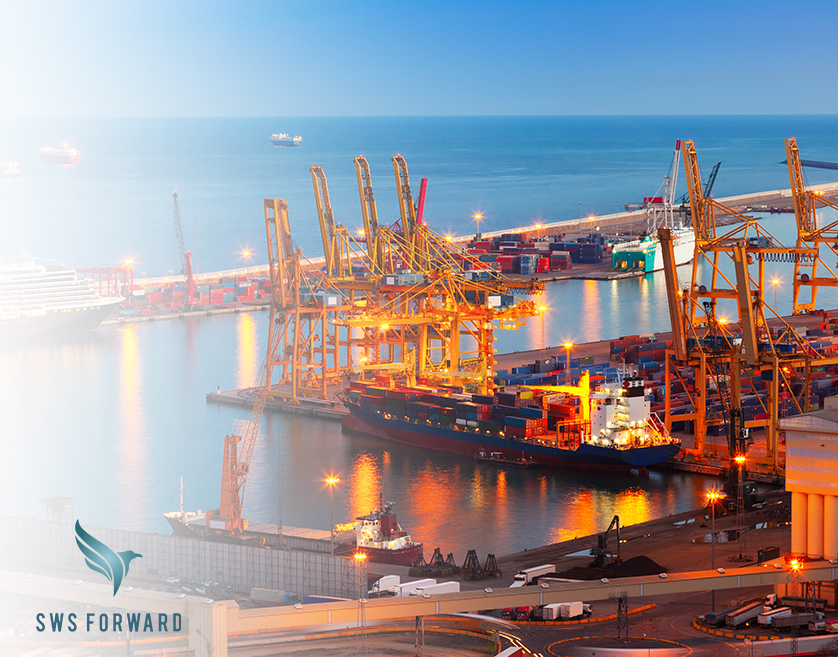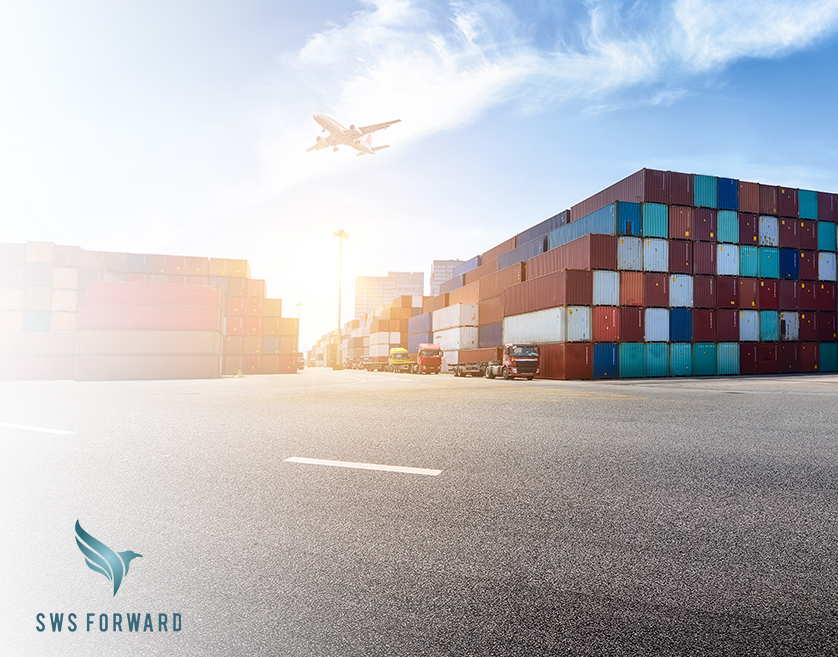A Complete Guide To Ocean Freight Services

Introduction to Ocean Freight Services
Ocean freight services play a pivotal role in facilitating the movement of goods across vast distances. From raw materials to finished products, businesses rely on efficient and reliable ocean transportation to access markets worldwide. In this comprehensive guide, we’ll delve into the intricacies of ocean freight services, exploring everything from the different types of shipping to key players in the industry, factors affecting freight rates, and emerging trends shaping the future of maritime trade.
Ocean freight services refer to the transportation of goods via sea routes using cargo vessels. This mode of transport is particularly suited for large volumes of goods or bulky items that are not time-sensitive.
Definition and Scope of Ocean Freight Services
Ocean freight services encompass a wide range of activities, including booking cargo space, loading and unloading vessels, managing customs clearance, and ensuring the safe and timely delivery of goods to their destination ports.
Overseas freight accounts for the majority of international trade, serving as the backbone of the global economy. It offers cost-effective and environmentally sustainable transportation solutions, connecting producers and consumers across continents.
Types of Ocean Freight Services
Different Modes of Ocean Freight
- Full Container Load (FCL): FCL involves shipping goods in dedicated containers, providing shippers with exclusive use of the container from origin to destination. This option offers greater security and flexibility but may be costlier for smaller shipments.
- Less than Container Load (LCL): LCL allows multiple shippers to share space in a single container, making it a cost-effective solution for smaller shipments that do not require a full container. However, it may result in longer transit times and increased handling at ports.
- Roll-on/Roll-off (RoRo): RoRo vessels are designed to transport wheeled cargo, such as cars, trucks, and trailers, that can be driven on and off the ship. This mode of transport is commonly used for transporting vehicles and heavy machinery.
- Breakbulk Shipping: Breakbulk shipping involves transporting non-containerized cargo, such as oversized machinery, project cargo, and bulk commodities, that cannot fit into standard containers. It requires specialized handling and equipment at ports.
Specialized Ocean Freight Services
- Reefer Containers: Reefer containers are equipped with refrigeration units to transport temperature-sensitive cargo, such as fresh produce, pharmaceuticals, and chemicals, ensuring that the goods remain in optimal condition throughout the journey.
- Hazardous Material Shipping: Hazardous material shipping involves transporting goods that pose a risk to health, safety, or the environment, such as flammable liquids, corrosive substances, and radioactive materials. It requires strict compliance with international regulations and safety protocols.
- Oversized Cargo Transport: Oversized cargo transport refers to the shipment of exceptionally large or heavy items that cannot be accommodated in standard containers, such as industrial machinery, wind turbines, and infrastructure components. It involves careful planning and coordination to ensure safe and efficient transportation.
Key Players in Ocean Freight
Shipping Lines
- Major Shipping Companies: Major shipping companies, also known as ocean carriers or liners, operate fleets of cargo vessels that transport goods between ports worldwide. These companies play a crucial role in facilitating global trade and commerce.
- NVOCCs (Non-Vessel Operating Common Carriers): NVOCCs are freight forwarders that do not own or operate their own vessels but instead lease space on ocean carriers to transport goods on behalf of shippers. They consolidate cargo from multiple customers to achieve economies of scale and offer competitive rates.
Freight Forwarders
Role and Responsibilities
Freight forwarders act as intermediaries between shippers and carriers, coordinating the transportation of goods from origin to destination. They handle various tasks, including booking cargo space, arranging transportation, preparing documentation, and managing customs clearance.
Choosing the Right Freight Forwarder
When selecting a freight forwarder, it’s essential to consider factors such as experience, reputation, service capabilities, and geographic coverage. A reliable and experienced freight forwarder can streamline the shipping process, reduce costs, and mitigate risks.
Ocean Freight Routes and Trade Lanes
Major Trade Routes
- Trans-Pacific: The Trans-Pacific route connects Asia, particularly China, with the West Coast of North America, including ports in the United States and Canada. It is one of the busiest and most economically significant trade routes globally, facilitating the flow of goods between the world’s two largest economies.
- Trans-Atlantic: The Trans-Atlantic route links Europe with the East Coast of North America, serving as a vital corridor for trade and commerce between the United States, Canada, and countries in Western Europe. It has historical significance and remains a crucial trade route to this day.
- Asia-Europe: The Asia-Europe route connects major manufacturing hubs in Asia, such as China, Japan, and South Korea, with consumer markets in Europe. It is characterized by large volumes of containerized cargo and serves as a critical artery for global supply chains.
Emerging Trade Routes
- Arctic Route: The Arctic route, also known as the Northern Sea Route, is gaining attention as melting ice caps make it increasingly navigable during certain times of the year. It offers a shorter and more direct passage between Asia and Europe, potentially reducing transit times and fuel consumption.
- South China Sea Route: The South China Sea route is strategically important for trade between East Asia, Southeast Asia, and Oceania. However, geopolitical tensions and territorial disputes in the region pose challenges to maritime navigation and security.
Factors Affecting Ocean Freight Services
Shipping Regulations and Compliance
Ocean freight services are subject to various international regulations, treaties, and conventions governing safety, security, environmental protection, and labor standards. Compliance with these regulations is essential to ensure the smooth operation of maritime trade and mitigate risks.
Market Trends and Pricing
Ocean freight rates are influenced by factors such as fuel prices, vessel capacity, demand-supply dynamics, geopolitical events, and economic conditions. Understanding market trends and pricing mechanisms is crucial for shippers to negotiate favorable terms and manage shipping costs effectively.
Environmental Impact and Sustainability
The maritime industry faces growing pressure to reduce its environmental footprint and adopt sustainable practices to mitigate climate change and protect marine ecosystems. Initiatives such as IMO regulations on sulfur emissions, ballast water management, and carbon emissions reduction are driving industry-wide efforts towards sustainability.
Choosing the Right Ocean Freight Service Provider
Evaluating Service Quality
Reliability and on-time delivery are critical factors in choosing an ocean freight service provider. Shippers depend on timely arrivals to meet production schedules, fulfill customer orders, and avoid costly disruptions to their supply chains.
Effective communication and responsive customer service are essential for maintaining transparency, resolving issues, and addressing concerns throughout the shipping process. Shippers should seek service providers that prioritize customer satisfaction and offer proactive support.
Cost Considerations
Freight rates and associated fees, such as bunker surcharges, terminal handling charges, and documentation fees, significantly impact the overall cost of shipping. Shippers should carefully review pricing structures and seek competitive quotes from multiple providers to optimize their shipping expenses.
In addition to upfront freight rates, shippers should be aware of hidden costs that may arise during transit, such as demurrage, detention, customs duties, and cargo insurance premiums. Assessing the total cost of shipping, including ancillary charges, is essential for budgetary planning and risk management.
Technology and Tracking Capabilities
Advancements in technology, such as GPS tracking, electronic data interchange (EDI), and blockchain, are transforming the ocean freight industry, enabling real-time visibility and transparency throughout the supply chain. Shippers should leverage digital solutions to track shipments, monitor inventory levels, and optimize logistics operations.
Documentation and Customs Clearance
- Bill of Lading: The bill of lading is a legal document issued by the carrier that serves as a receipt for the goods. It is evidence of the contract of carriage, and title to the cargo. It plays a crucial role in facilitating the transfer of ownership and facilitating customs clearance at destination ports.
- Import and Export Documentation: Import and export documentation, including commercial invoices, packing lists, certificates of origin, and export declarations, are required for customs clearance and regulatory compliance. Shippers must ensure that all necessary documents are accurately prepared and submitted to avoid delays or penalties.
- Customs Regulations and Compliance: Customs regulations vary by country and govern the importation and exportation of goods. This includes tariffs, quotas, trade restrictions, and import/export controls. Shippers should familiarize themselves with applicable customs regulations. They should work with experienced customs brokers or freight forwarders to navigate the complexities of international trade compliance.
Insurance and Risk Management
Understanding Cargo Insurance
Cargo insurance provides coverage against loss or damage to goods during transit. It offers financial protection against risks such as theft, damage, natural disasters, and maritime accidents. Shippers should assess their risk exposure and obtain appropriate insurance coverage to safeguard their valuable cargo.
Risk Assessment and Mitigation
Risk assessment involves identifying potential threats and vulnerabilities in the supply chain. These may include route hazards, geopolitical risks, and weather-related disruptions. Implementing strategies to mitigate these risks is essential. Proactive risk management measures, such as route planning, contingency planning, and cargo tracking, can help shippers minimize the impact of unforeseen events.
Claims Handling Process
In the event of loss or damage to cargo, shippers may file insurance claims with their insurance providers to seek compensation for their losses. The claims handling process typically involves documenting the incident, assessing the extent of the damage, and submitting a claim for reimbursement. Timely and thorough claims management is essential for resolving disputes and recovering losses effectively.
Challenges and Solutions in Ocean Freight
- Port Congestion and Infrastructure Issues: Port congestion and inadequate infrastructure can lead to delays, inefficiencies, and increased costs throughout the supply chain. Addressing these challenges requires investments in port expansion, modernization, and automation to enhance capacity, efficiency, and resilience.
- Supply Chain Disruptions: Supply chain disruptions, such as natural disasters, geopolitical conflicts, labor strikes, and pandemics, can disrupt ocean freight operations and impact the flow of goods. Shippers should develop robust contingency plans. They should consider diversifying their supplier base, and maintain open lines of communication with their logistics partners to mitigate the impact of disruptions.
- Technological Innovations and Solutions: Technological innovations, such as digitalization, automation, and predictive analytics, are revolutionizing the ocean freight industry, enabling greater efficiency, visibility, and collaboration across the supply chain. Embracing technology-driven solutions can help shippers optimize their logistics processes, improve decision-making, and stay competitive in the global marketplace.
Future Trends in Ocean Freight
Digitalization and Blockchain Technology
Digitalization and blockchain technology hold immense potential to streamline documentation processes, enhance transparency, and reduce fraud in ocean freight transactions. By digitizing paperwork and leveraging blockchain for secure data sharing, the industry can eliminate inefficiencies and improve trust and accountability among stakeholders.
Sustainable Shipping Practices
Sustainable shipping practices, such as fuel efficiency measures, alternative fuels, and emission reduction technologies, are gaining traction as the maritime industry seeks to reduce its environmental impact and comply with regulatory requirements. Investing in eco-friendly technologies and adopting sustainable business practices can help shippers minimize their carbon footprint. This all helps contribute to a greener future.
Impact of Global Events on Ocean Freight
Global events, such as trade tensions, geopolitical conflicts, natural disasters, and public health crises, can have profound effects on ocean freight operations. They can disrupt supply chains and reshape trade patterns. Shippers must stay informed about geopolitical developments and macroeconomic trends to anticipate potential risks and opportunities in the evolving global landscape.
Why Choose SWS Forward for Ocean Freight Services
At SWS Forward, we pride ourselves on being the premier choice for ocean freight services. With years of experience and a commitment to excellence, we offer a range of unparalleled advantages to our clients:
- Expertise and Reliability: Our team of seasoned professionals possesses extensive knowledge and expertise in ocean freight logistics. We understand the complexities of international shipping. We have a dedication to delivering reliable and efficient solutions tailored to meet our clients’ specific needs.
- Global Network: With a vast network of strategic partners and agents worldwide, we have the capabilities to handle shipments to and from any corner of the globe. Whether it’s a small consignment or a large-scale project cargo, we have the resources and connections to ensure seamless transportation and timely delivery.
- Customized Solutions: At SWS Forward, we recognize that every shipment is unique, and we are committed to providing personalized solutions to address our clients’ individual requirements. From specialized equipment to complex documentation, we work closely with our clients to develop tailored solutions that optimize efficiency and minimize costs.
- Cutting-Edge Technology: We leverage the latest technology and digital platforms to enhance visibility, transparency, and communication throughout the shipping process. Our state-of-the-art tracking systems enable real-time monitoring of shipments. This allows our clients to stay informed and in control every step of the way.



